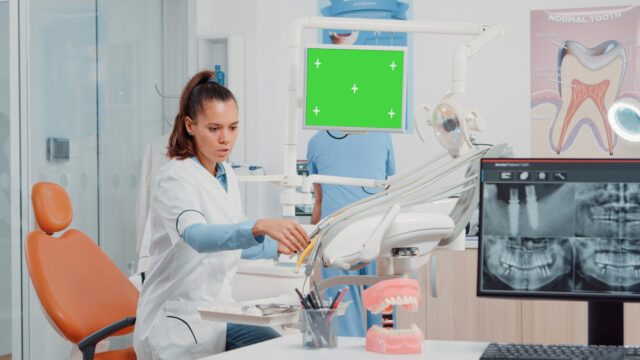Artificial intelligence is transforming dental practices right now. What once seemed like a risky leap is quickly becoming a competitive necessity. With over 30,000 clinicians using AI daily, according to VideaHealth CEO Florian Hillen, the technology is shifting from a novelty to standard care. So, what does this mean for your practice, and why should you care?
AI Is Detecting What You Might Miss
Early-stage cavities can be easy to overlook, but missing them can mean more invasive treatments down the line. That’s where AI comes in. Using vast datasets, AI can identify incipient decay with impressive accuracy, allowing dentists to act before the damage progresses. Combine that with a product that can halt or even reverse early decay, and you’ve got a powerful duo that could reduce the need for drilling and restorations.
For preventive dentistry, timing is everything. Spot issues too late, and you’re limited to reactive treatments. AI changes that by providing a sharper, earlier warning system, giving you a chance to intervene before minor decay becomes a major problem. This is great for patients, and it’s good for your bottom line. Early intervention often means more affordable, less invasive care, improving patient satisfaction and boosting case acceptance.
From “Why AI?” to “Why Not AI?”
The perception of AI in dentistry is evolving fast. At industry conferences like ADSO, the shift is evident: just a year ago, many dentists were skeptical or hesitant to be early adopters. Now, the fear is falling behind. AI is becoming a competitive advantage. Hillen notes that clinicians now see not using AI as the real risk, especially as it enhances patient communication, builds trust, and improves diagnostic accuracy.
DSOs (Dental Service Organizations) were among the first to embrace AI because of their data-driven approach, but private practitioners are quickly catching up. Even senior clinicians, often more resistant to new technology, are recognizing AI’s potential to improve efficiency and outcomes. And as AI becomes more affordable and accessible, expect to see widespread adoption across practices of all sizes.
The Numbers Speak for Themselves
AI’s rapid adoption in dentistry is staggering. VideaHealth, for example, processes nearly half a billion dental X-rays annually and supports over 15 million patients each year. Their recent partnership with Heartland Dental, one of the largest DSOs in the U.S., is proof of the technology’s effectiveness. With 1,600 offices achieving over 95% adoption within six months, it’s clear that AI is delivering real, measurable results.
What makes this adoption rate so impressive is the notoriously slow pace of change in healthcare. Yet, dentistry is outpacing other medical fields when it comes to AI. Compared to radiology, where AI adoption has been slower, dentistry is proving more agile and open to innovation. Hillen predicts that within the next two years, dental AI will surpass healthcare AI in terms of usage and impact.
What’s Next for Dental AI?
While AI is currently making waves in diagnostics, its potential goes far beyond spotting cavities. Imagine AI-assisted treatment planning, more personalized patient care, and streamlined workflows that reduce administrative burdens. As the technology advances, expect to see AI playing a bigger role in everything from orthodontic assessments to periodontal disease management.
This translates to more efficient practices, better patient outcomes, and a stronger competitive edge. Patients, in turn, benefit from faster diagnoses, less invasive treatments, and greater confidence in their care. The result? A win-win for both sides of the dental chair.
As AI technology becomes more accurate, affordable, and accessible, the risk of not adopting it into clinical dental practice grows. Falling behind means missing out on improved diagnostics, better patient outcomes, and a competitive advantage in an increasingly tech-driven industry.
So, if you’ve been waiting to see how AI plays out, now’s the time to act! Early adopters are already reaping the benefits, and the gap between AI-enabled practices and those without it is only going to widen.
Dentistry 411 will continue to track the science, the products, and the legal landscape so you don’t have to. Subscribe to stay ahead of the curve, cut through the marketing, and make smarter decisions in your dental practice.
SOURCES: Becker’s Dental





